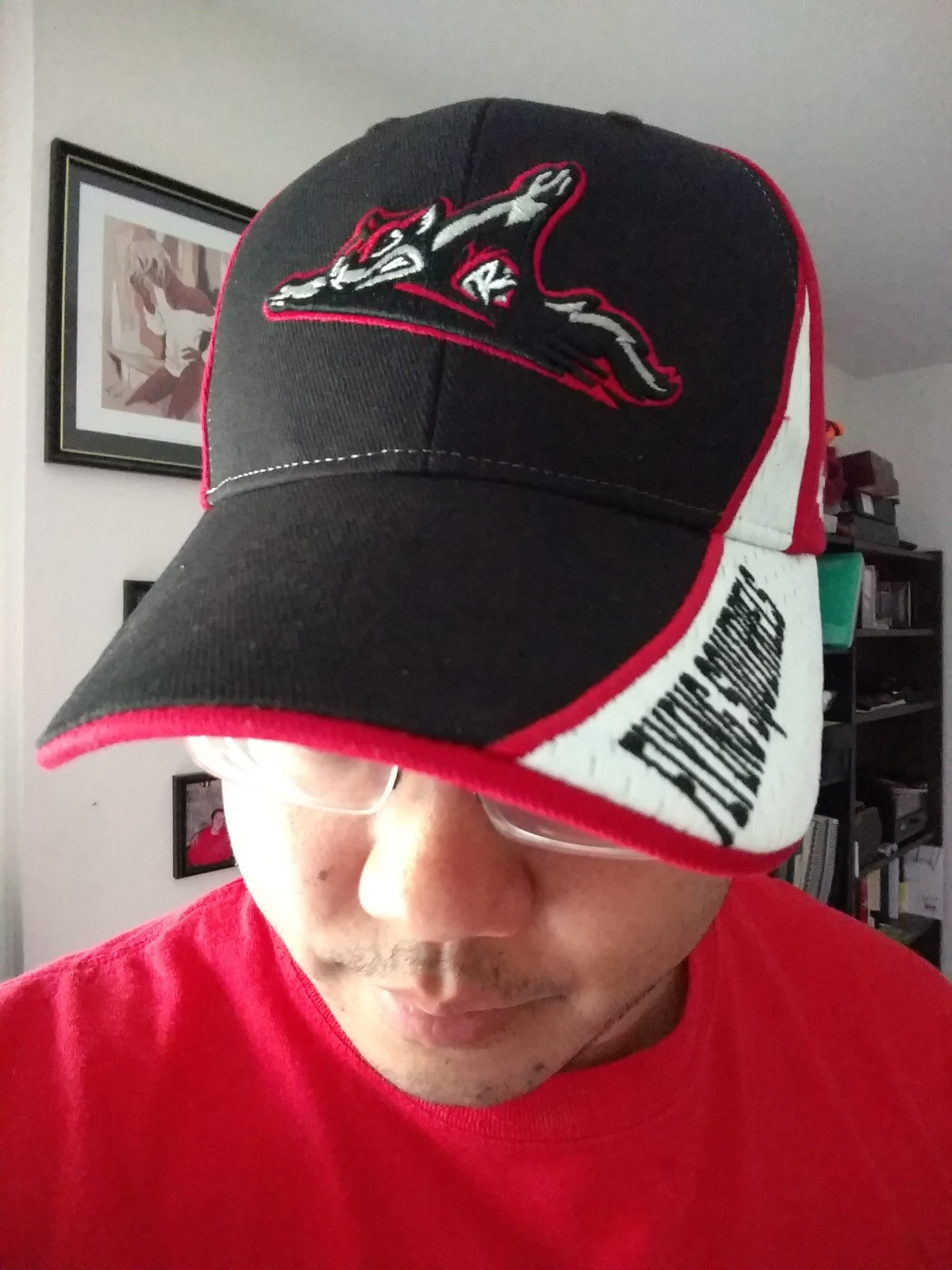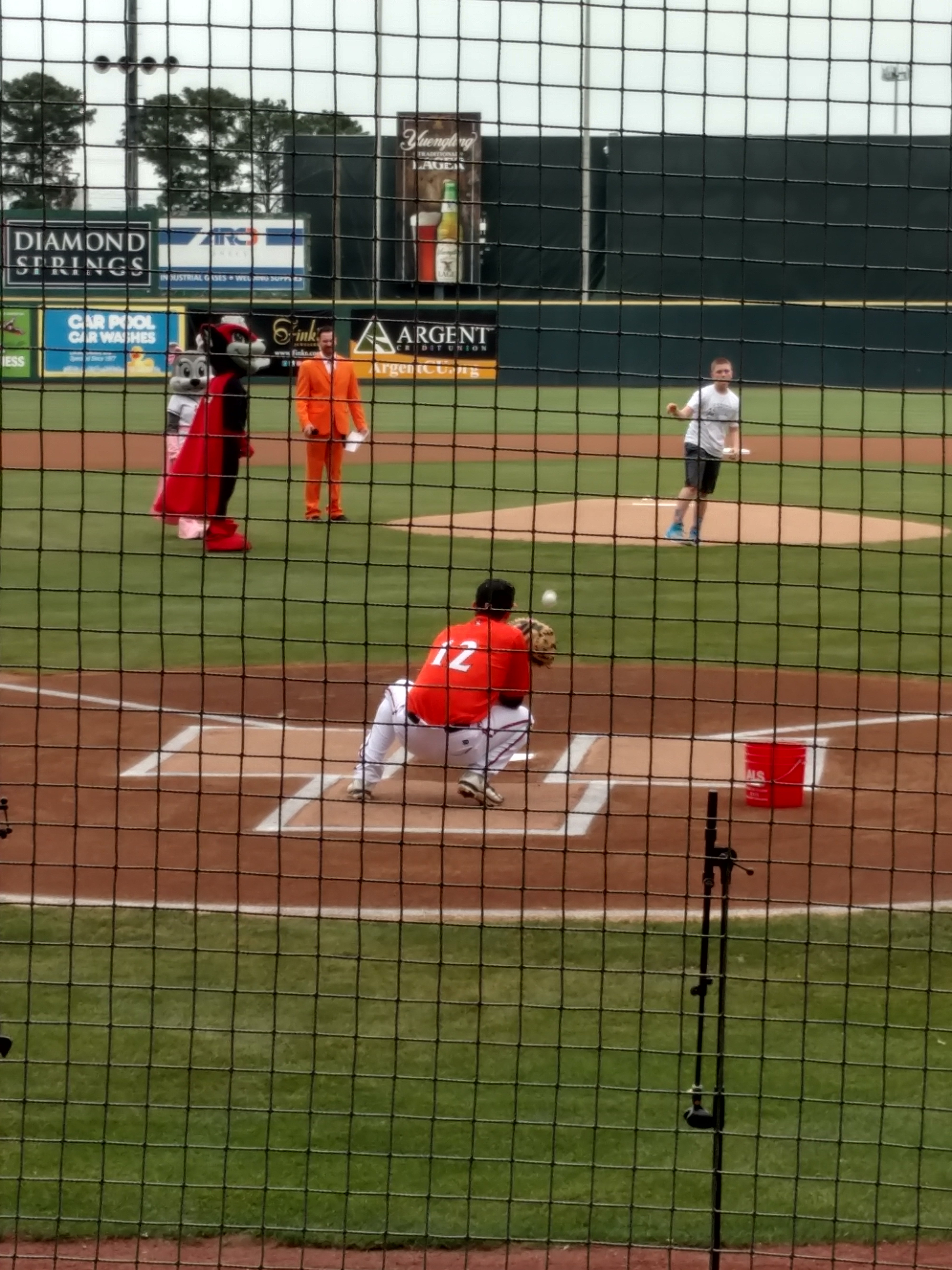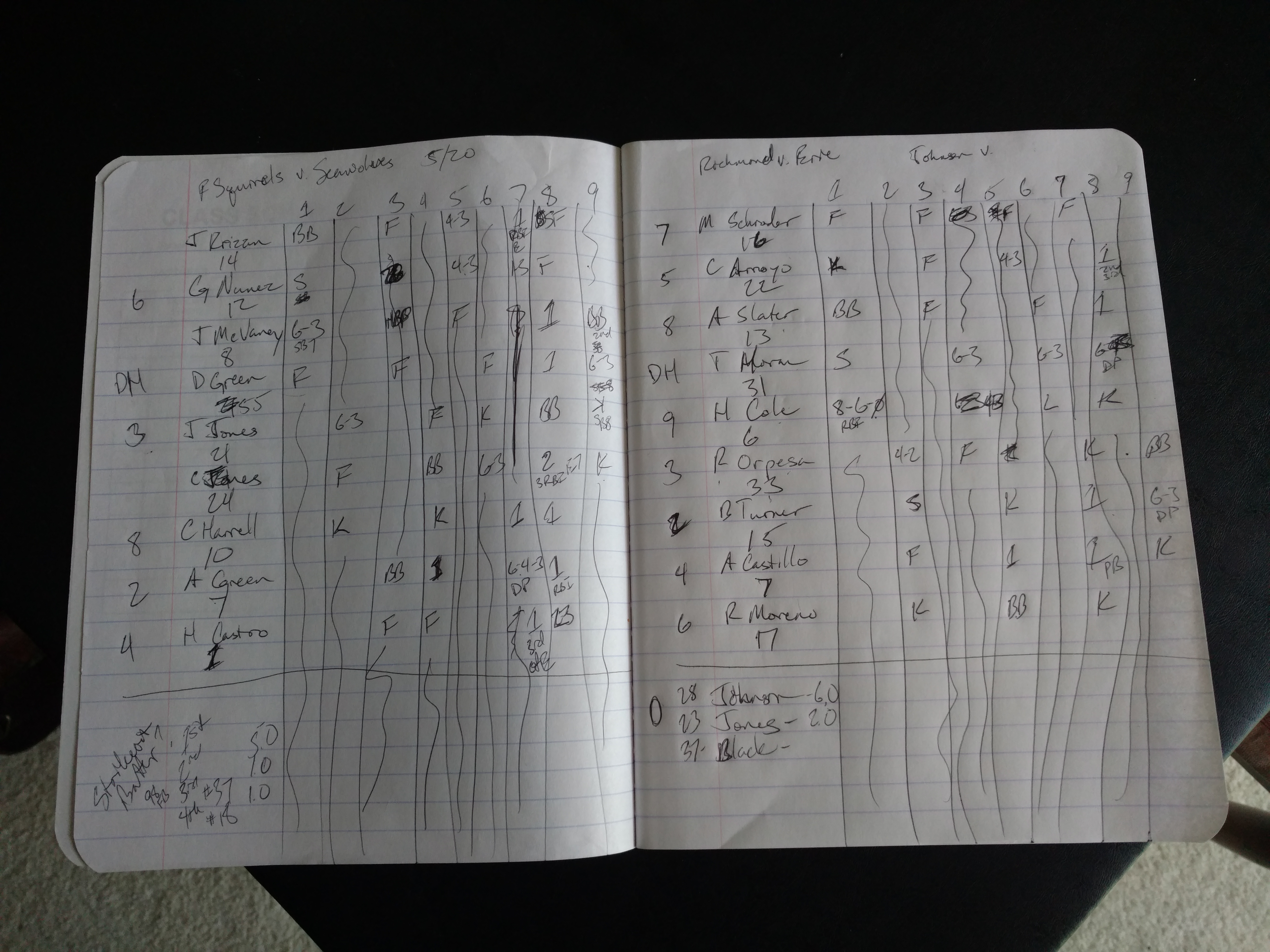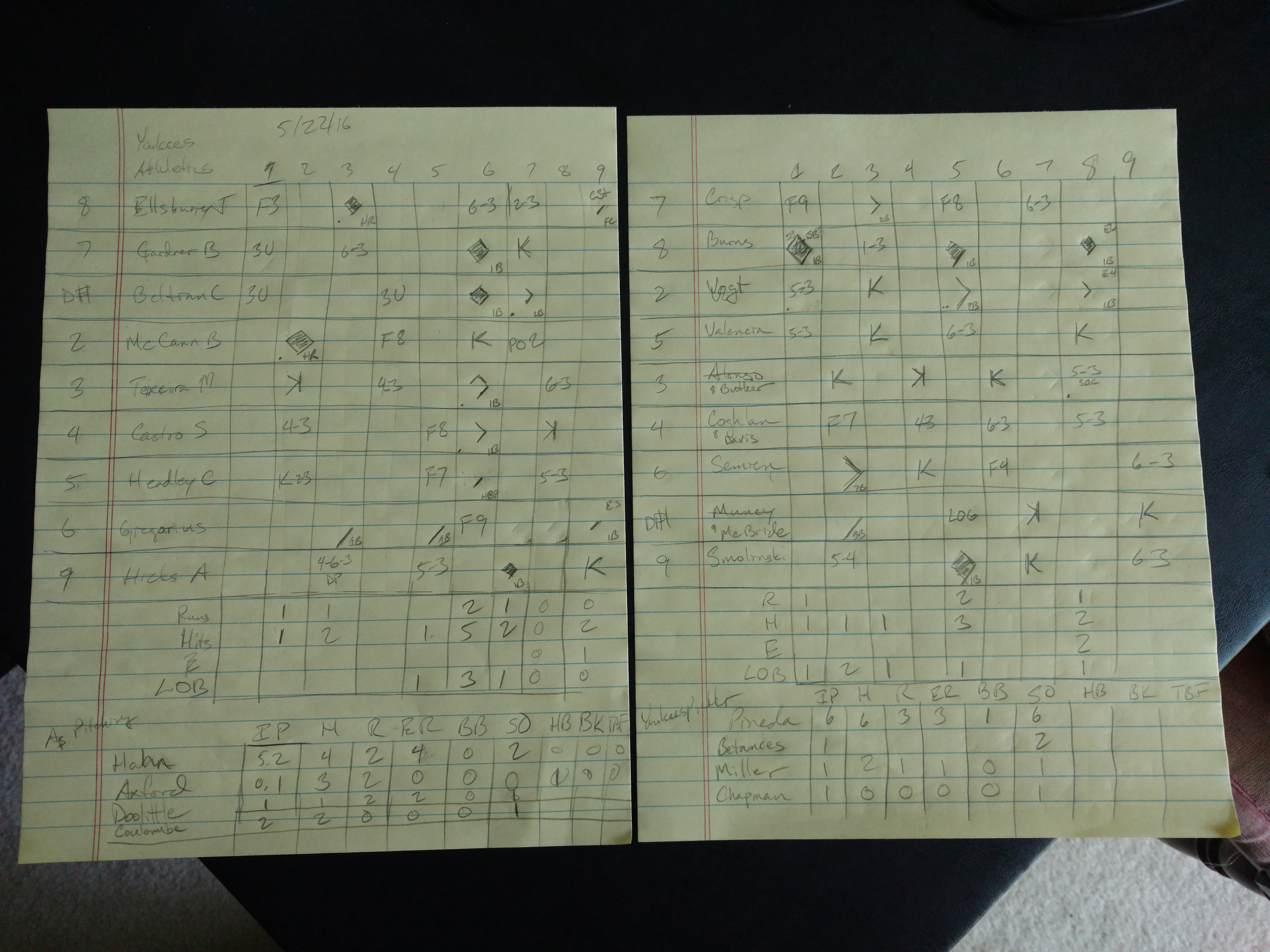Tagged: Double A
Reaching Your Goal
Are you part of the nearly half of New Year’s Resolutioners that have given up? Or are you one of the less than 10% who will be successful? Life is hard, keep working towards your dreams. Ron Wright never gave up. He fought for what he wanted. All of his hard work eventually paid off.
Ron Wright was selected in the 7th Round of the 1994 MLB Draft by the Atlanta Braves from Kamiakin High School in Kennewick, Washington. He played two and a half seasons in the Braves minor league system. Wright spent 1994 with the Rookie Level Gulf Coast League Braves, 1995 with the Single A Macon Braves, and 1996 with the High A Durham Bulls and Double A Greenville Braves before an August trade to the Pittsburgh Pirates. Wright now set his sights on the Steel City. He finished 1996 with the Double A Carolina Mudcats and spent 1997 with the Triple A Calgary Cannons. 1998 was a lost season as Wright appeared in only 20 Games, 17 with the Triple A Nashville Sounds and 3 with the Rookie Level Gulf Coast League Pirates. 1999 was equally frustrating, playing only 24 Games for the Double A Altoona Curve. In October, the Cincinnati Reds selected Wright off waivers. His aim moved further down the Ohio River. Wright spent 2000 with the Double A Chattanooga Lookouts and Triple A Louisville RiverBats. In November, Wright signed as a Minor League free agent with the Tampa Bay Devil Rays. He spent the season back with the Durham Bulls, now a Triple A team. Again a Minor League free agent, Wright signed with the Seattle Mariners for the 2002 season. He began the season with the Triple A Tacoma Rainiers. Ron Wright had played eight Minor League seasons with 12 different teams.
Heading into the 2002 season Wright had played in 666 Minor League games. He hit .261 with 121 Home Runs, 453 RBI, and 361 Runs scored in 2,729 Plate Appearances. Wright had played at every level, Rookie Ball to Triple A. He fought through injuries and the ups and downs of professional baseball. Wright remained one step away from the Majors. The trip from Cheney Stadium to Safeco Field is only 35 miles, but Wright kept fighting to make that drive.
The bad news in Seattle was future Hall of Fame Edgar Martinez was hurt running to First. Martinez’s injury put a damper on the Mariners early season success. Edgar’s injury was bad news for everyone except Minor League journeyman Ron Wright. He finally got the call to the Big Leagues. The years of toil had paid off. He was heading to the show.
It was a pleasant afternoon in Arlington, Texas. It was 76℉ and overcast. Ron Wright had made it to the Majors on Sunday, April 14, 2002. The Mariners were on the road, playing the Rangers at The Ballpark in Arlington. 32,866 fans watched as Seattle’s John Halama faced off against Texas’ Kenny Rogers. Ron Wright was the DH, batting 7th for the Mariners. All was right in the world.
In the Top of the 2nd, Ron Wright strolled to the plate. This was the moment he had worked so hard for, his first Major League At Bat. Ruben Sierra was standing on Second after a lead off Single and a John Olerud Walk. Wright stepped in the Right Handed Batters Box looking to add to the Mariners 1-0 lead. Kenny Rogers rocked and fired. In the blink of an eye, Wright was walking back to the dugout. Striking out looking on three pitches was not how Wright envisioned his first At Bat in the Big Leagues, but he had stamped his name in the record books as playing in a Major League game. There would be more chances.
The next opportunity for Wright came in the Top of the 4th. Seattle still clung to its 1-0 lead, and Wright could extend the lead. He again came up with Sierra and Olerud on base. Sierra led off with a Double and moved to Third on Olerud’s Single. Wright worked the count to 2-2. On the fifth pitch he swung. The ball bounced to Rogers on the mound who fired to Alex Rodriguez coming over from Shortstop to cover Second for the first Out. Rodriguez then threw home to Catcher Bill Haselman who chased Sierra back towards Third. He tossed the ball to Third Baseman Hank Blalock who chased Sierra back towards Home. Blalock tossed the ball to Rogers who tagged Sierra for the second Out. During the rundown Wright reached First and was advancing towards Second. He was never known for his speed, just nine Stolen Bases in the Minors. After tagging Sierra, Rogers threw to Second Baseman Michael Young who tagged Wright coming into Second for the third Out. The 1-6-2-5-1-4 Triple Play killed the rally, and made Wright’s debut memorable for all the wrong reasons.
Baseball is about dealing with failure. There are few failures like hitting into a Triple Play. Baseball does not give you long to dwell on your failures. In the Top of the 6th, Wright came up for the third time. He was patient in his first two At Bats, but not this time. The Mariners were trailing 2-1. Again Ruben Sierra was on Second and John Olerud on First. On the first pitch from Rogers, Wright hit the ball to Shortstop Alex Rodriguez to start a Double Play. Sierra moved to Third, but the rally was dead. The frustrating day continued.
Ron Wright never got that fourth At Bat. Manager Lou Piniella sent up Pinch Hitter Mark McLemore in the 7th Inning. His Major League debut was complete. Wright had three At Bats against Kenny Rogers. He saw nine pitches. Made six Outs. The Mariners won 9-7. The game took 3 hours and 39 minutes. Before the Mariners returned to the field on Monday Ron Wright was back in the Minors. He never returned to the Majors. Wright’s Major League career took less time than it takes to watch Gone With The Wind.
Was it worth it? Despite one of the worst possible debuts, Ron Wright can proudly say he was a Major League Baseball player. Only 18,039 players before him earned that title. While his career was not what he hoped, Wright made it to the top. He kept grinding. He kept going. The baseball gods rewarded his lifetime of work with one of the strangest days ever on a baseball field. Keep working towards your goals.
DJ
Sad Birds
Baseball is a cruel sport. Regardless how hard you try, there are times when everything goes wrong. Sometimes the stars align to create magic and sometimes they create disaster. It is the latter in St. Louis this season. The Mets and Padres with their gigantic payrolls have received most of the attention surrounding disappointing seasons, but the Cardinals are also in conversation. St. Louis did not spend $250 million like San Diego or $340 million like New York, but they did pay $153 million for a last place season. The team’s payroll has remained consistent over the last several seasons. They are not to be confused with the Oakland Athletics and their tight fisted owner who is trying to force a move. What all of these teams lack, which the Cardinals have, is a sustained history of success. The Cardinal Way. A winning culture is not an accident, but it is not happening this season.
The Cardinal Way is doing everything the right way. The right way is subjective, as people get angry when things are not done their way, but success is hard to argue against. The Cardinal Way has kept St. Louis relevant for years despite not playing in a big market with a huge payroll. This year is the opposite of the Cardinal Way, losing and finishing last.
How long has it been since the Cardinals were a last place team? This season will be the Cardinals’ first last place finish in the three division era. Their most recent last place finish was in 1990, when St. Louis finished 70-92 and 25 Games Behind the Pittsburgh Pirates for the National League East crown. It was a surprise in 1990 that St. Louis found themselves in the cellar, because the Cardinals previous last place finish was in 1918. When you talk about bad baseball in St. Louis it was always the Browns, not the Cardinals.
How bad have the Cardinals been this season? On the mound, St. Louis pitchers have a 4.75 ERA, which is the 4th worst in the National League, and the second worst ERA+ at 90.. They have allowed the second most Hits, fourth most Runs, and fourth Worst WHIP at 1.462. Defensively, the Cardinals have been lackluster in nearly every position. They have the third worst defensive WAR (-5.7) in the National League. Only the Cardinals infield is above league average with the glove. The pitchers and outfield have combined for -5.9 WAR. It is hard to make up that much WAR when you are defensively deficient once the ball leaves the infield. Offensively, St. Louis has scored fewer runs than the league average per game. They have also produced fewer extra base hits than the National League average. They are Walking more than league average and Striking Out less, however they are hitting league average. The biggest indictment for the Cardinals is that they have left the most runners on base of any Major League team this season. It is hard to win when your offense cannot get runners home. By any measure it has been a rough season on the western bank of the Mississippi River.
Before Spring Training began, everyone knew the Athletics and Royals would be bad. The expectations for the Cardinals were different. St. Louis traded for Paul Goldschmidt in December 2018, sending three players and a compensation pick to Arizona for the First Baseman. Arizona received Carson Kelly, Luke Weaver, and Andrew Young. None of the three remain with the Diamondbacks organization. The return did not replenish Arizona with talent, like many Diamondbacks fans hoped. The same can be said for the Nolan Arenado trade. The Cardinals got the best defensive Third Baseman in baseball and $50 million from the Rockies. St. Louis sent Austin Gomber, Elehuris Montero, and three Minor Leaguers to Colorado. Gomber and Montero are fine players for the Rockies, but far from All Stars. Only one of the Minor Leaguers has risen above Double A. It was a Rocky Mountain salary dump. Goldschmidt and Arenado should anchor the next great Cardinals teams. Instead the team has faltered. The Farm System is no longer highly ranked. It has not steadily produced All Stars like in the past.
The Cardinals normally compete for the National League Central crown. The other four teams take turns competing against St. Louis for supremacy. Their competition comes and goes. The stranglehold on the division is no longer in the shadow of the Gateway Arch. The National League Central is one of the weakest divisions in baseball, so it should not be difficult to play meaningful games in September. The expanded Postseason also lowers the bar for entry into October. The Cardinals and their fans view the Postseason as the minimal expectation for any season. The thought of finishing last is unimaginable. The 2023 Cardinals have been sad. Is this just a blip or the beginning of change for the franchise?
DJ
Keeping Score
Note-taking is a tough task. It requires you to have an organized mental system to judge what is important and what isn’t necessary to recount for general understanding. Looking at box scores can give you a general understanding of what went on in a baseball game. Then there’s the scorecard. It’s a triumph of shorthand. This simple system, through development over decades, has a broad language and style that is the textbook definition of a picture saying a thousand words.
Deciding I wanted to learn how to fill out a scorecard came about for several reasons. Mostly that I wanted to learn more about the game. One of my favorite comedians talks about her love for sports and mentions that she enjoys filling out scorecards when she watches games live.
I also thought it might help me get a better idea of the flow of a game. I can still look at the box score and team stats of a football game then piece together a good idea of how the game went. I can’t say I can do that with a baseball box score. What I realized is that it’s because there are so many more details that matter to me when trying to interpret how things went, such as what part of the line up scored, what sort of pitch counts were occurring, etc.
On the other hand, I know baseball fans who bring books to the game because they enjoy being at the ballpark and listening to game being played. In the same way, I’ve often been playing Dodgers home games on my computer and just listening to Vin Scully call the game while I putz around on the internet.
All of this introduction to basically say that I was having a bad day and decided to drive a few hours away to catch a Double A game between the Richmond Flying Squirrels and the Erie Seawolves where I decided I would also learn to fill out a scorecard on the fly.
I decided in the morning that I would head down for the game. So I started looking online for instructions on how to fill out a scorecard. I was shocked at how many different methods people have posted. Here are a few that I found by typing in “how to fill out a baseball scorecard” via Google.
http://www.baseballscorecard.com/downloads/tutorial.pdf
http://www.wikihow.com/Mark-a-Baseball-Scorecard
http://www.artofmanliness.com/2008/05/29/how-to-score-a-baseball-game-with-pencil-and-paper/
http://baseball.about.com/od/baseball12/ss/howtoscore.htm
http://mlb.mlb.com/mlb/official_info/baseball_basics/keeping_score.jsp
I was planning on getting a program for the game and thought there was a pretty good chance there would be a scorecard in it. If there wasn’t, I’m sure I would have been able to get one from somewhere in the stadium. If not, I was already bringing a notebook to take down my thoughts about the game, so I would use that if I had to.
I got the stadium about 90 minutes before the game started. I had already missed out on the free t-shirt giveaway and the courtyard area was packed with Girl Scouts who were getting to have a sleepover at the park after the game. Sadly, they weren’t selling cookies.
But I got 32 oz beer and some food – a pound of curly fries, a burger, and some chicken tenders then found my seat. If you’re reading this then it’s not likely that you need to be reminded that minor league baseball is quite awesome. However, it can always be restated because the beer, food, hat, and ticket cost me less Tubmans than I’ve got fingers on one hand.
I mean got this great hat.
Richmond Flying Squirrels (The Winning Run/ BL)
And this was my viewpoint for the game (one of the opening pitches).
First pitch from Richmond (The Winning Run/ BL)
There was a scorecard in the game program but the gloss on the paper made it nearly impossible to write on it with the pen I brought. So by the 2nd inning, I was madly scribbling together a scorecard in my notebook. I had missed the announcement of the lineups so I spent part of my time trying to cobble together everyone’s position. I didn’t mark basepath travel or pitch counts. It’s pretty sparse but if you gave me some time, I could give you a decent account of the game that would go beyond the box score.
My first attempt to score a game. (The Winning Run/ BL)
I know I missed a lot. But I was engaged the whole time into the game. It also went by rather quickly. When you’re keeping track of the action, you’ll see that there’s a lot more going on in baseball than you think.
Derek offered to help me learn how to score a game. The beauty of the internet is that we cued up a game from earlier that day and watched it together while chatting online. I had run out of printer ink though so I sketched out another scorecard, using the following as a template.
http://www.baseball.org.il/images/Scorecard.pdf
And here is what I got.
A little practice can go a long way. (The Winning Run/ BL)
I think I did a much better job this time around.
As I looked over the various instructions and thought back to some of the methods people have discussed with me in the past week, I’m amazed at the richness of baseball vocabulary. Even as I was learning from Derek, I think we disagreed on which K was a strikeout looking and a strikeout swinging. If the shortstop fields the ball, tags a force-out at 2B and then makes the throw to 1B for the double play, how do you score it? My first thought was to put down 6-3 DP but I got another suggestion of 6-6-3 because the first number is the person who fields it and then subsequent numbers are for each player that is involved with an out. But what about a cutoff man? 8-6-2 play to catch someone at home plate?
The language of the baseball scorecard is something amazing to converse over. If you look carefully you see what’s important to the scorer when they follow the game. One of the above linked examples includes writing a line to illustrate the direction of a ball put into play. Some scorecards include balls and strikes as that can tell you how a pitcher and line up are squaring off against each other. Other people instead look to the bottom of the card to see the inning totals and innings pitched to get a similar idea.
As I am finding my baseball storytelling voice, the scorecard is a fun way to define that voice and get snapshots of its development. I haven’t looked it up so I’m speculating that Vin Scully probably keeps a scorecard of the games among what must be a serious list of concise notes as he calls and comments on games all by himself.
We keep track of the things that are important to us. Our notes take on a language that allows us to share stories and relate our interpretations of events. So how we track things becomes an integral part of that retention.
BL





